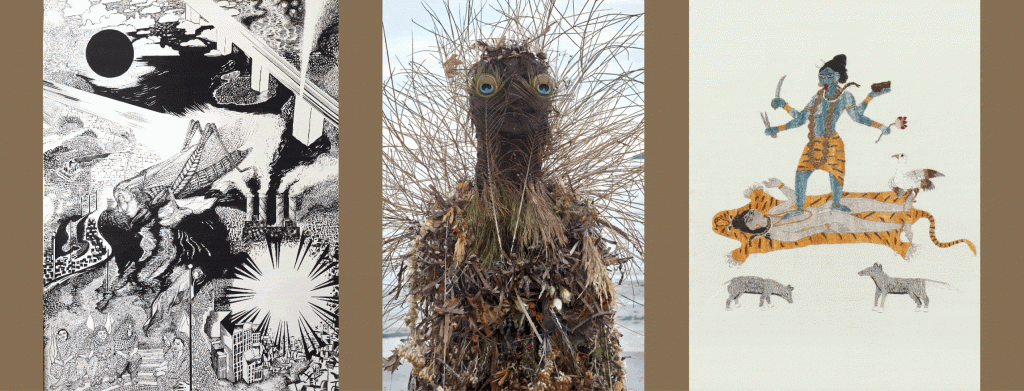Ishara Art Foundation presents Sheher, Prakriti, and Devi, an exhibition that marks artist and photographer Gauri Gill’s first extensive curation. Ruminating on the interwoven relationship between dynamic cities, the natural environment and the inseparable sacred, the show presents twelve artists and collectives working across diverse contexts of urban, rural, domestic, communitarian, public and non-material spaces.
Sheher, Prakriti, Devi comes from the Hindustani terms for ‘city’, ‘nature’ and ‘deity’. The exhibition germinates from Gill’s ongoing documentation of urban and semi-urban spaces in India since 2003 in a series titled ‘Rememory’ (after Toni Morrison). Gill offers a unique lens to regard cities as habitation spaces shaped by multiple life-worlds. Together with various practitioners with whom she shares an affinity, the exhibition presents a world where built and natural structures are rendered porous by termites; gates open to unfinished roads; historical ruins become homes to migratory birds while pigeons become occupants of post-colonial houses; locusts bear witness to contemporary terrors, and forests manifest as spirit sisters. In this show, viewers are invited to regard ecology as an overlap of cultural, natural and spiritual domains.
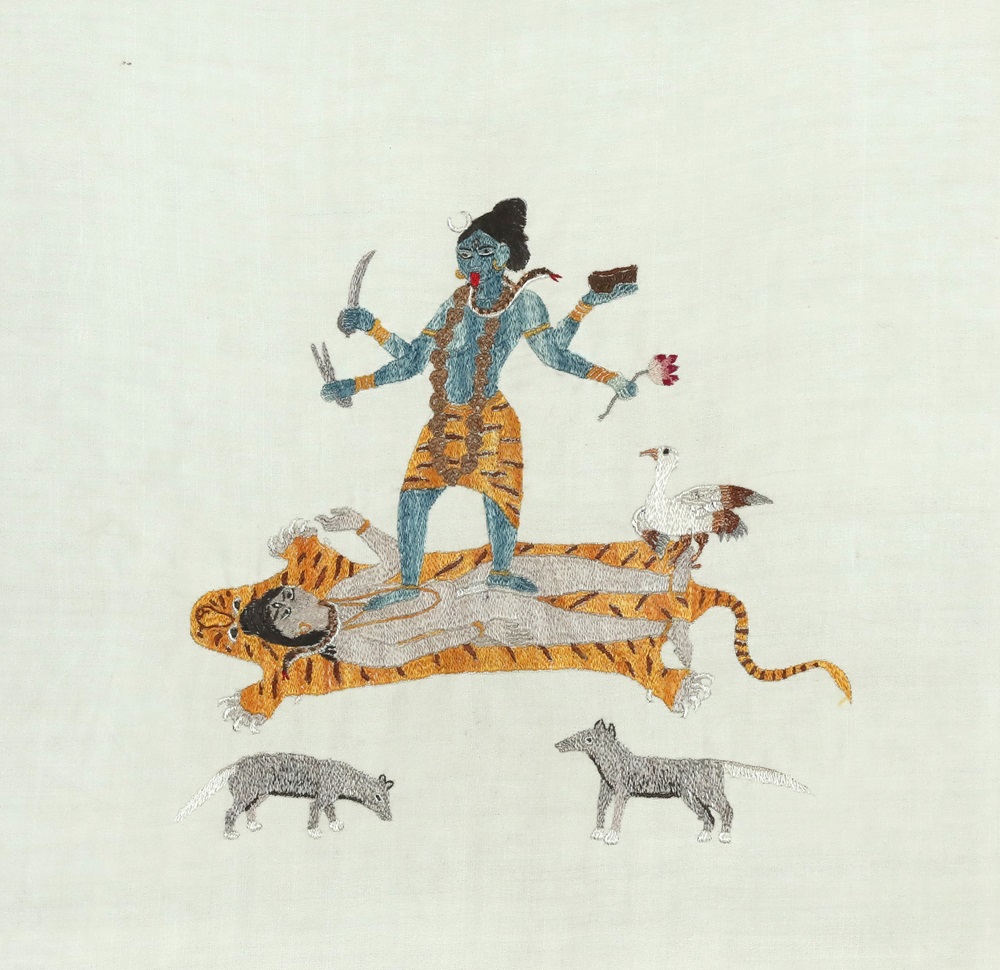
In Gill’s words, “Apart from the sheer beauty and multiple truths expressed by the different artists – from the mundane to the metaphysical, the gross to the subtle, and the artificial to the sacred – through this palimpsest and idiosyncratic exhibition, I wish to acknowledge those who have found ways to stubbornly persist in their practice, often sharing their work only within their families and local communities, completely outside the circuits and networks of professional artists, contemporary art discourse, galleries and markets… Through this gathering of insistent voices, we hope to consider the dualistic worlds of the depleted and regenerative, artificial and natural, colonial and Indigenous, young and old, English and non-English, mundane and magical, absent and present.”
Sheher, Prakriti, Devi includes works by Chamba Rumal, Chiara Camoni, Gauri Gill, Ladhki Devi, Mariam Suhail, Meera Mukherjee, Mrinalini Mukherjee, Rashmi Kaleka, Shefalee Jain, Sukanya Ghosh, Vinnie Gill and Yoshiko Crow.
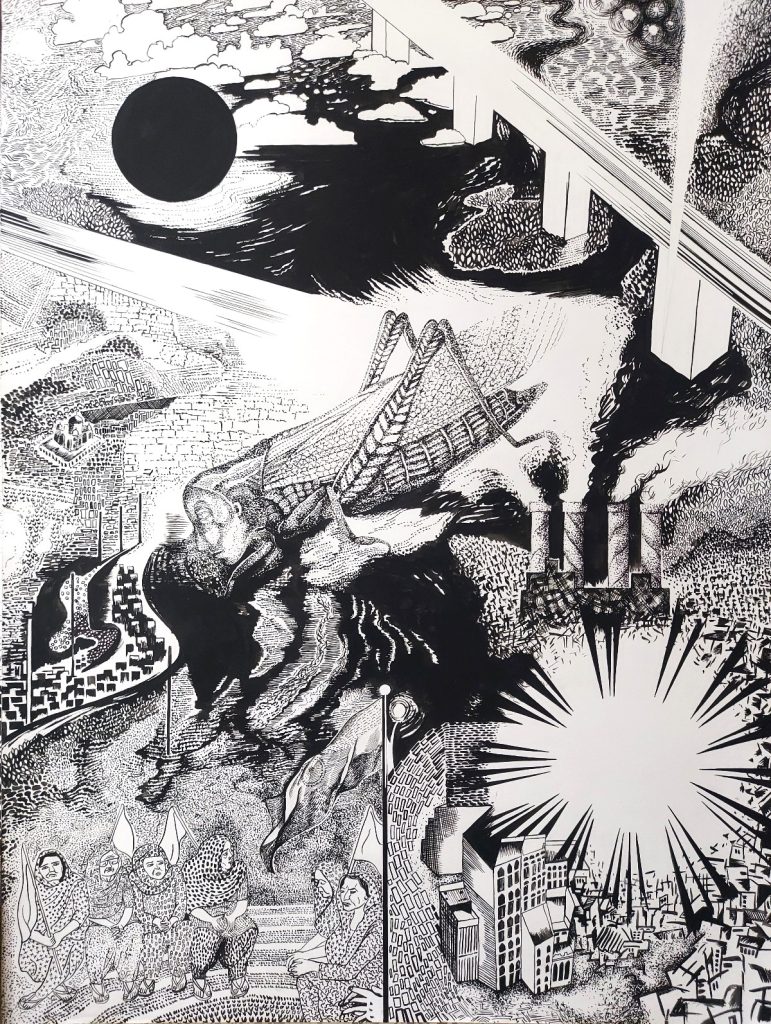
Gauri Gill (b. 1970) was born in Chandigarh and lives in Delhi, India. Gill’s practice is complex because it contains several lines of pursuit. These include a more than two-decade-long engagement with marginalised communities in rural Rajasthan called Notes from the Desert, now an extensive photographic archive of rural India. She has explored human displacement and the migrant experience among South Asians in North America and Afghanistan in The Americans and What Remains. Projects such as the 1984 notebooks highlight her sustained belief in collaboration and ‘active listening’ and her use of photography as a memory practice. Beginning in early 2013, Fields of Sight is an equal collaboration with the renowned Adivasi artist Rajesh Vangad, combining the contemporary language of photography with the ancient one of Warli drawing to co-create new narratives. In Acts of Appearance (from 2015—ongoing), the artist has worked closely with the paper mache artists of the Kokna and Warli tribes in Maharashtra, using unique new masks to tell fictional stories improvised together of contemporary life in the village. Working in both black and white and colour, Gill addresses the Indian identity markers of caste, class and community as determinants of mobility and social behaviour. Her work has empathy, surprise and a human concern over survival issues.
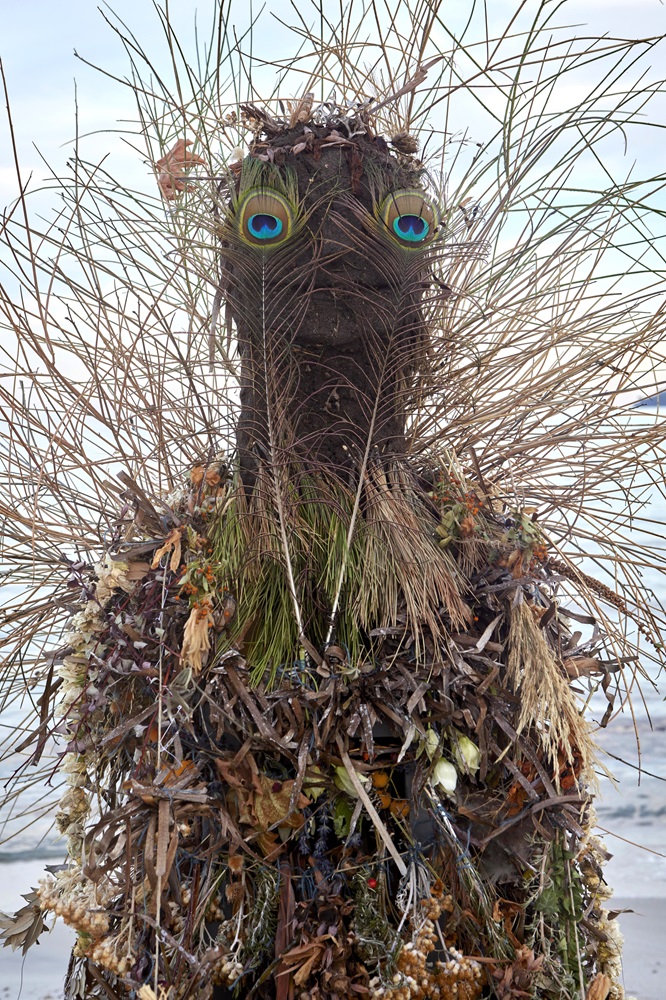
Gill has exhibited in solo and group exhibitions within India and internationally since 1995, including the 58th Venice Biennale (2019) and Documenta 14, Athens and Kassel (2017). In 2022, her first major survey exhibition opened at the Schirn Kunsthalle, Frankfurt, and continued to the Louisiana Museum of Modern Art, Humlebæk, in 2023. Gill has recently published two books with Edition Patrick Frey about her collaborations with rural artists, ‘Acts of Appearance’ (2022) and ‘Fields of Sight’ (2023). In 2023, she was awarded the 10th Prix Pictet. Her work is in the collections of prominent institutions worldwide, including the Museum of Modern Art, New York; Tate Museum, London; Smithsonian Institution, Washington; Fotomuseum, Winterthur; and the Ishara Art Foundation and the Prabhakar Collection, Dubai.
Chiara Camoni (b. 1974) is an artist based in Fabbiano in the Apuan Alps in Versilia, Italy. Her practice consists of drawing, vegetal print-making, video and sculpture. Her works are often created with friends and relatives, all of whom are members of an expanded studio she refers to as the ‘Centri di Sperimentazione’, and open into impromptu associations, organised seminars and workshops, testing different forms of shared authorship. She founded the MAGra, the Contemporary Art Museum of Granara, and the Vladivostok group with other artists. She has been developing a cycle of seminars titled ‘La Giusta Misura’ with Cecilia Canziani for several years.
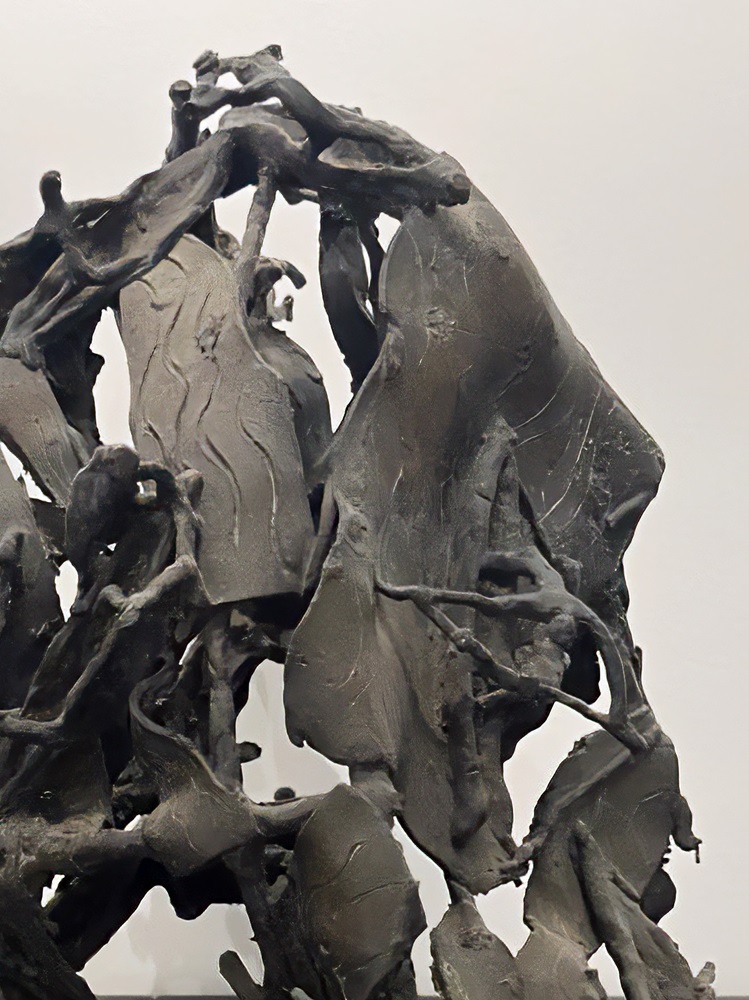
Emily Avery Yoshiko Crow is an artist born in Boulder, Colorado, USA. She works with watercolour, natural sculpture, textiles, animation and film production design. Her art draws from religious iconography, restoring mythic and mystical imagination into contemporary life. Her parents raised Crow following the Shambhala tradition of Tibetan Buddhism. She studied Chinese Traditional Medicine in San Francisco at the ACTCM and Fine Arts at Naropa University with Joan Anderson and Robert Spellman. After completing her formal education, she lived between India, Nepal and Canada for several years. In these years, she studied Indian miniature painting with master painter Mahaveer Swami in Bikaner and the art of Indigo dying, Shibori and Katagami with Bryan Whitehead in Japan. Emily was the Production Designer for Khyentse Norbu’s films’ Hema Hema: Sing Me a Song While I Wait’ (2016), ‘Looking for Lady with Fangs and a Moustache’ (2019), and ‘Pig at the Crossing’ (2022). She moves across time zones and boundaries, exploring the intersection of humans, nature, spirituality and the unseen world.
Ladhki Devi (b. 1955) lives in Sakhre village, Maharashtra, India, and is a practitioner of Warli art. Her practice comprises ephemeral drawings of rice flour paste on earth depicting goddesses, gods, and all life forms. It is an art she observed closely while growing up around her mother and grandmother, who were both Suvasinis, a title given to married women who helped conduct wedding rituals. Devi is also the mother and first teacher of the accomplished Warli practitioner Rajesh Chaitya Vangad, with whom Gauri Gill has collaborated since 2013. For Gill’s exhibition ‘Sheher, Prakriti, Devi’ at Galerie Mirchandani + Steinruecke, Mumbai (2021), Devi was invited to make work outside the context of the village as a fellow practitioner of contemporary art. Devi’s style is fluid. The intuitive nature of her work comes from her lived experience and years of devotional drawing. Her works are in the Ishara Art Foundation and the Prabhakar Collection, Dubai.
Sukanya Ghosh (b. 1973) lives and works between Delhi and Calcutta, India. Ghosh’s practice spans painting, animation, photography and moving images. The minutiae of urban life, popular culture and collective memory form the basis of her art-making, reflecting the dynamic transformation of cities and the life that pulsates within them. She has exhibited widely in solo and group exhibitions that include the Lianzhou Museum of Photography, China (2019); Sharjah Art Foundation, Sharjah (2021); VAICA: Indian Contemporary Video Art Festival (2021); the Rencontres d’Arles (2022); the Tabakalera, San Sebastian (2022); and Cymroza Gallery, Mumbai (2023). She is a recipient of the Charles Wallace India Trust Award.
Vinnie Gill (b. 1946) was born in Jhansi and lives in Delhi, India. Her interest in nature was first kindled as a child in her grandparents’ cottage in their Garden House in Kasauli, Himachal Pradesh. During her subsequent studies in Shimla and Dalhousie, she took a keen interest in the art classes and drew obsessively in her textbooks. This led to a lifelong practice of creating diaries comprising drawings of trees, flowers, birds and animals, mountains, rivers, old tombs and occasionally spiritual iconography. Having learned the fundamentals of drawing and painting in school and college, she later experimented with different mixed media techniques, including pastels, Chinese pigment paints, Rotring pens, watercolours, acrylics and oil paints, slowly developing her work style. She would take along a sketchpad, rice paper, handmade paper, pencils, pens and colours to record her journeys visually. Although she has not exhibited formally, her diary and study at home have provided a place of refuge and solace in times of grief and upheaval and remain a consistent practice for over six decades, shared only with an intimate circle of family and friends. Her works were exhibited in Gauri Gill’s exhibition ‘Sheher, Prakriti, Devi’ at Galerie Mirchandani + Steinruecke, Mumbai (2021).
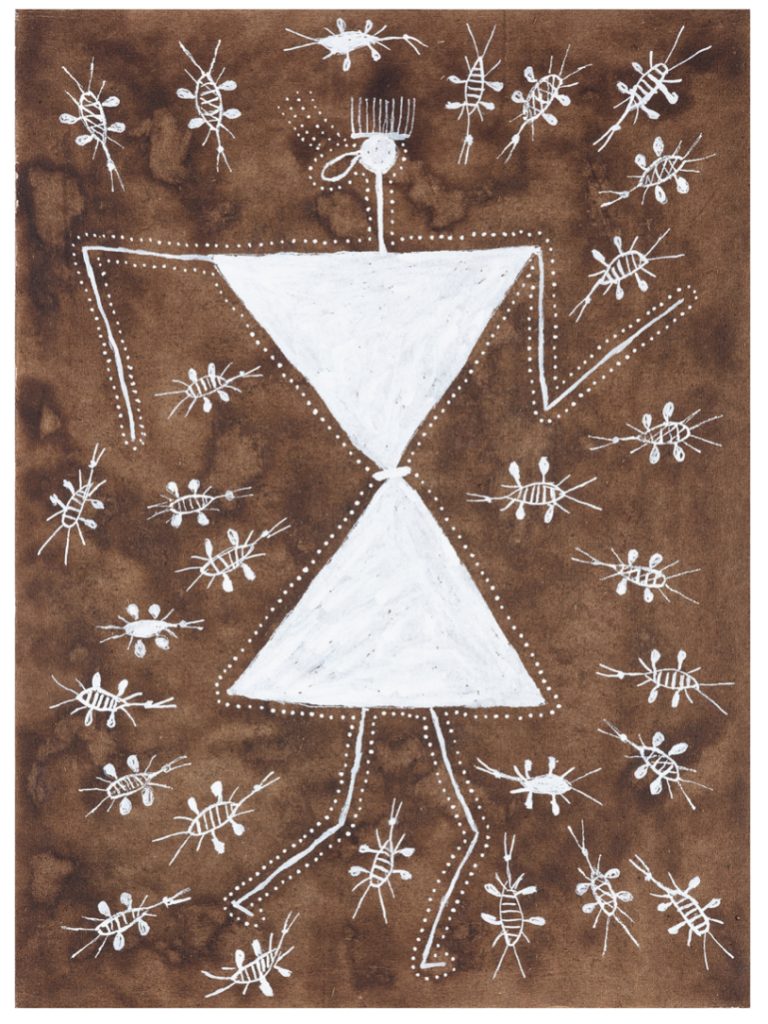
Shefalee Jain (b. 1979) is an artist, illustrator and educator based in Delhi, India. Through her art practice and research, she attempts to interrogate the construction and reiteration of normative constructs in contexts such as modern medicine, children’s educational material and visual culture. She has had various solo and group exhibitions in Bangalore, Bombay, Delhi, Hyderabad, and Vadodara since 2006. Shefalee co-founded BlueJackal, an independently run platform for engaging with, creating, and publishing visual narratives. She is also the co-founder and co-editor of the zine’ Drawing Resistance’, a collaborative crowdfunded publication founded in response to and supporting the nationwide protests in India against the Citizenship Amendment Act (CAA). She has illustrated several children’s books for publishers that include Tulika, Eklavya and Muskaan, and she regularly writes a column on art for young readers in Chakmak, a magazine published by Eklavya in Bhopal. Shefalee holds a PhD in Visual Art from Ambedkar University, Delhi, and was an Assistant Professor of Visual Art at the School of Culture and Creative Expressions (SCCE) from 2012 to 2022.
Rashmi Kaleka (b. 1957) was born in Nairobi, Kenya, and lives and works in New Delhi, India. She is an artist and an urban farmer whose practice draws from her observations and understanding of nature through sounds, visuals, habitation patterns and growth across different species. She has been researching permaculture and founded Farm8, a community farming project in Delhi NCR. Kaleka’s practice is also informed by sound, going back to her childhood in Kenya, where the rhythm and intonation of Swahili, Punjabi and the tribal dialects of her grandparents permeated her consciousness. Her work has been part of various exhibitions that include the Museum of Contemporary Art, Taipei (2011); the Kulthuhuset, Stockholm (2011); the Helsinki City Art Museum, Helsinki (2012); and the ARKEN Museum of Modern Art, Copenhagen (2012).
Meera Mukherjee (1923 – 1998) was born in Calcutta, in pre-partition India. Her practice drew inspiration from the ordinary lives that surrounded her, including those of fishermen, weavers, and darners, who were not only subjects for her work but also, at times, collaborators. She developed her technique of making wax sculptures after her lifelong exploration of metal-casting techniques used by artisanal communities across different parts of India to Western academic methods.
Mrinalini Mukherjee (1949 – 2015) was born in Mumbai, India. A committed sculptor, she worked extensively with fibre, ceramic and bronze all her life. Mukherjee had an abiding interest in nature, and her knowledge of Indian sculpture, folk art, modern design, and local crafts and textiles underlie her artistic sensibility. Her practice transgressed art-historical categories of abstraction, figuration, realism and the artisanal, undoing the distinction between the traditional and the modern.
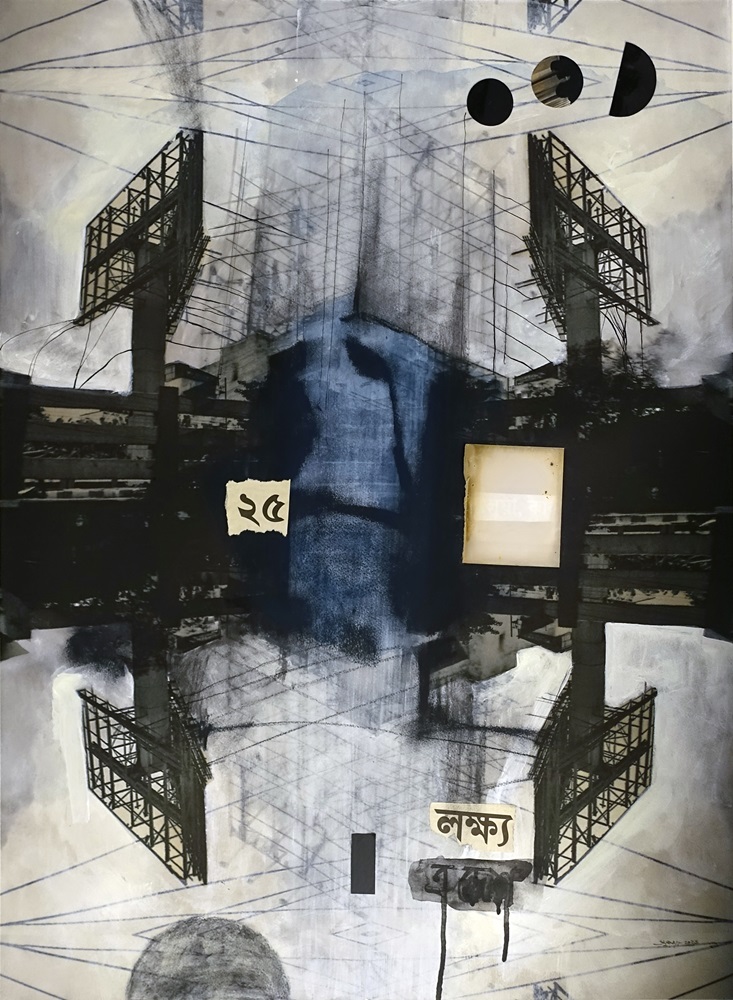
Mariam Suhail (b. 1979) was born in Rawalpindi, Pakistan, and lives and works in Bangalore, India. Her work stems from the incidental, undocumented minutia of everyday conversations, media and culture. Her practice deals with the complexities of language, dissecting and re-presenting what lies in the spaces between images, words, sounds and material. Her work spans various media, including sculpture, video, digital photos, books, text, and drawing. Mariam’s work has been exhibited in solo and group exhibitions that include shows in Grey Noise, Dubai; GALLERYSKE, Delhi and Bangalore; 56th Venice Biennale (2015); Berlin Biennale 8 (2014); the Kochi-Muziris Biennale (2022-23); and the Dhaka Art Summit (2016). Mariam has also contributed to publications like Shifter 21 – Other Spaces (2013), Paessagio’s Coral Issue by Blauer Hase (2016) and Silicon Plateau – Volume 2 (2019).
Chamba Rumal is a narrative art form from the hill state of Himachal Pradesh, India. Comprising of embroidered handkerchiefs that go back to the Chamba kingdom in the 17th century, the art was inspired by the Pahari school of miniature painting and flourished as a collaboration between embroiderers that consisted of women working alongside miniature painters. This art was revived by the Delhi Craft Council in 1996. The Rrumals (handkerchiefs) presented in the exhibition were made over a twenty-month collaboration between miniature artists and embroiderers at CHARU, the Delhi Craft Council’s Centre in Chamba, and designer Swati Kalsi. The embroiderers include Masto Devi, Tulsi Devi, Uma Devi, Jyoti Bala, Bindu Devi, Pushpa Devi, Pooja, Nagina, and Garima, alongside painters Mohan Prajapat and Shhilpaguru Babulal Maroitia.
Arindam Chatterjee Burrows into Culture’s Dark Past and Unresolved Contradiction in His New Show

